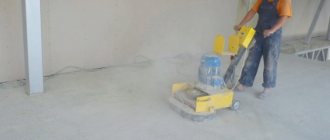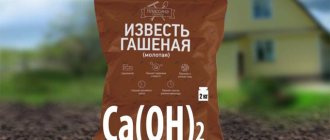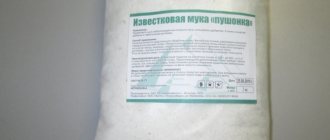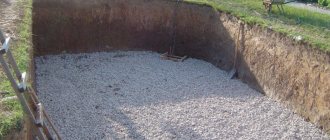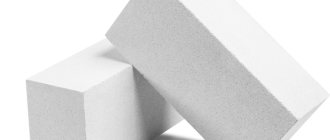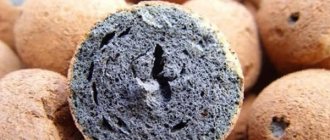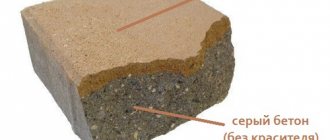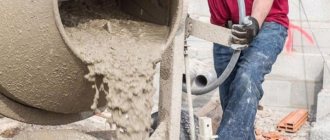Use for soil fertilization
It is believed that carbonates cannot be used simultaneously with manure and other nitrogen fertilizers, since they neutralize each other's effects. But there are substances that are even recommended to be added to manure or compost heap to enhance the activity of microorganisms:
- travertine or calcareous tuff - a rock with a small amount of calcite;
- lake lime, which is formed when water bodies dry out.
We suggest you familiarize yourself with How to Lime Fruit Flies
The following substances are suitable for reducing soil acidity and plant nutrition, but they are not used simultaneously with manure:
- oil shale combustion products;
- carbide lime is a product of processing calcium carbide;
- fluffy garden lime - use in the vegetable garden and horticulture is limited to whitewashing trees;
Phosphorite flour and limestone have a similar effect - they alkalize the soil, but they cannot be added to the soil together. The fact is that a slightly acidic environment is required to dissolve phosphorus.
Excessive application of carbonates can stop the process of phosphate absorption by plants. It is better to apply lime as a fertilizer for the garden separately, and then test the soil for acidity.
Using slaked lime (fluff)
It is recommended to use liming after testing the soil for acidity.
If the litmus paper turns red, then use the full dosage per square meter - 150 g. If the soil is just beginning to acidify, the paper is pink or beige, then half the dosage or even ¼ of the recommended amount is enough. Norms for light soils - sandy and sandy loam.
| Acidity level | Amount of lime per hundred square meters |
| Ph up to 4.5 | 40 kg |
| 4,6 | 35 kg |
| 4,8 | 30 kg |
| 5,0 | 25 kg |
| More than 5.2 | 20 kg |
Norms for heavy soils - loam and clayey.
| Acidity level | Amount of lime per hundred square meters |
| 4,5 | 60 kg |
| 4,6 | 55 kg |
| 4,8 | 50 kg |
| 5,0 | 45 kg |
| 5,2 | 40 kg |
| More than 5.4 | 35 kg |
It is important not to overdo it with liming, as excess carbonates harms plants. In particular, the absorption of phosphorus, and along with it potassium, may be impaired. This is evidenced by the appearance of a blue tint on the leaves.
A year before planting fruit and berry crops, you can alkalize the soil. There are different opinions on how often to hold this event. Some advise once every 8–9 years, others suggest every 4 years.
It depends on how often you apply mineral fertilizers, which cause acidification. If you use organic matter, then acidification will not occur soon, so it is recommended to monitor what begins to grow in the area of sour lovers and take action in advance.
There are certain rules for fertilizing the soil with lime. For the event to be beneficial, the substance must be laid to a depth of about 20 cm, that is, sprinkle the soil evenly and dig it onto the bayonet of a shovel. Up to 6 cm is allowed when not the entire dosage is used, but only ¼ of the volume.
In autumn, liming is carried out after harvesting. Dolomite flour, chalk, fluff or ash are scattered evenly over the entire area and dug up. In the soil, bacteria begin to process the substance and convert it into nutrients ready for absorption.
In spring, carbonates are added to the soil before planting to give time to dissolve. The main condition is a moist environment in which the substance quickly transforms into an accessible form and is absorbed by the root system of plants.
Quicklime consists of pieces of different sizes, which is inconvenient for adding to the soil. It is recommended to first pour the lime with water so that it turns into a fine powder, and then scatter it over the area in this form.
You can buy lime at any specialized store and it is better to do it in bulk. Firstly, it will be cheaper, and secondly, liming a large area of soil requires a lot of material, and it will be inconvenient to constantly buy more.
Liming should not be carried out just like that, without understanding the features of using lime on acidic soil. If the procedure is carried out at the wrong time, at a critical moment (in the fall, during harvest or early spring) the plants will be left without protection.
Overdoing it with lime is also dangerous, regardless of how the excess was achieved - over several treatments or during one. Alkaline soil does not directly harm plants, but it does prevent them from absorbing essential macronutrients from the soil.
Before liming acidic soils for the first time, determining the timing and rate of lime application, and doing other work to fertilize the site, it is worth determining the acidity level of the soil.
This is quite simple to do - you need a little soil from the area being tested and table vinegar. It is necessary to drop vinegar onto the soil and monitor the reaction. If it is not followed, then the soil is acidic and needs liming; if not, everything is in order and the gardener can concentrate on other fertilizers.
Also, when treating the soil with lime, it is advisable to pay attention to the following factors - the type of fertilizer and the date of the last treatment (if this is not the first liming).
There are several types of lime for fertilizer, but most often you can find limestone flour or dolomite flour on sale - it is this type of fertilizer that contains the most active substance.
An experienced gardener will figure out exactly how to lime his plot after the first time, but a beginner will benefit from a starting schedule that is suitable for most.
The best option to buy if the soil is medium to highly acidic is limestone flour or ground limestone. Its dosage is easy to calculate, and the damage to plants is minimal.
The depth to which the substance is planned to be introduced is important - usually the standard 20 cm in depth. However, if liming is applied to soil where the plants are young and vulnerable, a specially reduced dose of four times is often applied. This “light” option is introduced into the ground to a depth of no more than 4-6 cm.
The optimal season for treating the soil with lime is autumn.
The autumn harvest leaves the land free for a while, so the gardener can easily dig up the soil and at the same time do everything necessary without risking the plants. During the period that will pass before new plants are planted on this soil, the fertilizer will have time to take effect.
You can lime in the spring, but more carefully. When to apply lime to fertilize the soil - in the fall or in the spring - is up to everyone, except that the second option requires more experience and can harm the plants if the process is incorrect.
How to determine the application rate:
- Find the packaging of the lime you purchased - it should indicate the percentage of active ingredient in the fertilizer. If there is no packaging (the fertilizer is sold in bags), ask the seller about it or find the relevant information online by the name of the fertilizer.
- Determine the acidity of the soil, preferably with a degree. The main application dose will depend on this, as well as on the type of soil - from 200 to 600. Information on doses can be found in the public domain if you know the type of soil in a particular area.
- Multiply the dose value derived from the acidity of the soil and its type by 100, and then divide by the percentage of the active substance in your fertilizer (what you found out in the first place). The resulting value is the amount in grams.
We suggest that you familiarize yourself with the Rules for caring for white-veined spurge.
This calculation is quite accurate and should not harm the plants, but for the first time after application it is better to observe the area.
Bringing acidity back to normal is the main reason why gardeners use lime to fertilize the soil. Sometimes it’s enough just to sprinkle the area with a correctly adjusted dose - the rest will be done by lime flour and the processes it provokes.
The degrees of soil acidity are:
- Alkaline: negative acidity, no liming required.
- Neutral: pH 5.5-6, also does not require any manipulation.
- Weak: pH value 5.1-5.5, sandy and sandy loam soils with such indicators are not treated with lime.
- Average: pH 4.6-5.0.
- Strong: pH 4.1-4.5.
- Very strong: pH ≤ 4, with such indicators any soil urgently needs to normalize acidity.
Depending on the acidity of the soil, the gardener must calculate a liming schedule and stick to it if a stable harvest is needed.
Acidity itself cannot normalize. There are some crops that are comfortable in an acidic environment, but they are in the minority - cultivated plants grown in vegetable gardens prefer an alkaline environment.
Slaked lime is obtained by mixing unslaked lime with water, the latter's name is calcium oxide. The chemical process of quenching is accompanied by an increase in temperature (at the latter, the so-called melting of the powder occurs) to 512 ° C. The amount of heat released in this case is 65 kJ per 1 mole, which is equal to 1160 kJ per 1 kg of calcium oxide.
This chemical process is equal in strength to the amount of energy required to boil water or ignite wood. Hydrated lime (slaked) has the following formula: Ca(OH)2. To obtain slaked lime, the temperature of the water with which it is mixed is also important. The higher the temperature, the worse the product turns out.
In the photo, slaked lime (fluff)
Slaked lime is even used in cooking, but its most common use is in household areas. Moreover, it can be used both in private life and in large-scale construction.
So, hydrated fluff can be used in construction:
- When whitewashing walls and ceilings.
- When protecting wooden structures from rotting and fire (lime is coated with wooden structures of rafters and fences).
- When preparing a connecting solution.
- In the production of silicate concrete.
- When laying the stove's internal structure.
Slaked lime can be used no less widely in agriculture:
- For the production of lime fertilizers.
- For the production of bleach, which can be used in gardening in the country when treating trees.
- For the garden, when there is a need to treat the beds with a lime solution to prevent the formation of parasites and combat plant diseases.
- For tanning leather.
- For the formation of calcium compounds that can be used in wastewater treatment.
- For the production of additive E526 used in the food industry.
- For disinfection of passable canals in the roots of teeth in dentistry.
As you can see, many processes can only be carried out using slaked lime. In order for work with it to be successful, you need to know how to breed it.
You shouldn’t expect that you can whitewash drywall with slaked lime before painting. Fluff should be used only as an intermediate link in construction work.
Determination of soil acidity
To determine acidity, a special device is used - a Ph meter. But ordinary summer residents are unlikely to have it. Litmus tests are more readily available. They do not give accurate indicators, but by color you can determine how acidified the soil is:
- blue tint of paper – calcareous soil – alkaline or slightly alkaline;
- green tint – neutral;
- beige color is characteristic of loams;
- red and its shades – the soil is acidic.
If you have nowhere to buy litmus paper or no time, then you need to go out into the garden and carefully examine the soil. If there is a gray-white coating, such as ash, then it is necessary to add lime to the soil in the fall or spring. The amount of lime fertilizers is calculated based on the degree of acidification.
Many people know lime as a building material, but gardeners and gardeners use it as a soil fertilizer.
The main purpose of this fertilizer is to reduce the acidity level of the soil. Most cultivated plants grown in gardens develop well in slightly acidic soil. If you regularly deoxidize the soil, it will be possible to grow larger and better crops.
We invite you to familiarize yourself with Thuja transplantation: a step-by-step description of the process. Features of the plant
What is lime?
It is a simple calcium oxide used in many manufacturing and other applications. Gardeners use this substance to treat the soil with lime.
Lime used for horticultural purposes comes in slaked and quicklime varieties.
Slaked lime (fluff) and its use in the garden is known to everyone who takes at least some professional care of their plantings. In order to obtain such fertilizer, it is enough to stir ordinary lime with water.
Quicklime is used in its original form, without mixing with water. Its properties are similar to the slaked version, but you should use it more carefully - not all plants will tolerate this well. Also, deoxidizing the soil with quicklime will help protect the plants after planting.

